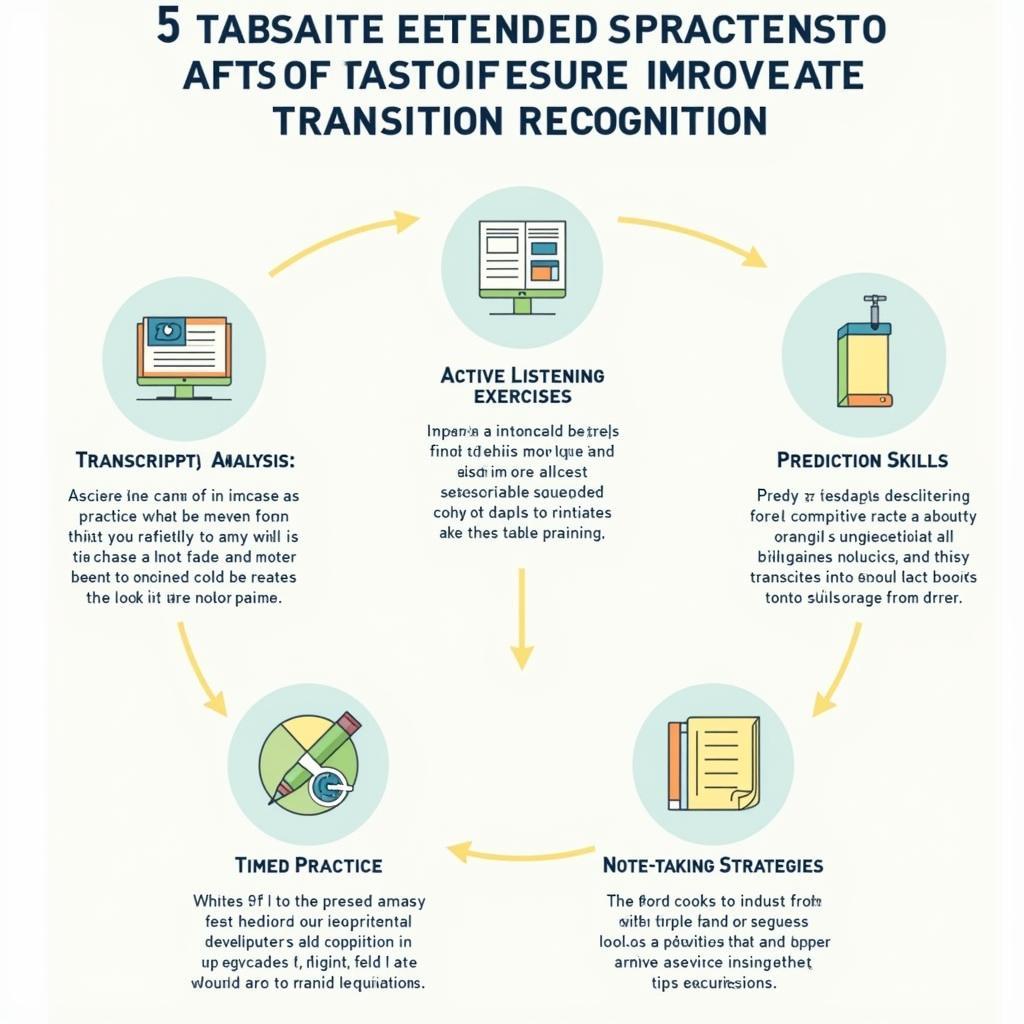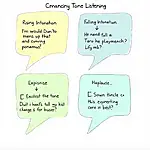Identifying key transitions efficiently is a crucial skill for success in the IELTS Listening test. These transitions act as signposts, guiding you through the audio and helping you anticipate important information. In this article, we’ll explore strategies to improve your ability to recognize and utilize these transitions effectively.
Understanding Key Transitions in IELTS Listening
Key transitions are words or phrases that signal a change in topic, direction, or emphasis within the audio. They help structure the information and indicate when new points are being introduced. Recognizing these transitions can significantly enhance your comprehension and ability to answer questions accurately.
Types of Key Transitions
- Chronological transitions: These indicate the order of events or steps in a process.
- Contrasting transitions: Used to present opposing ideas or compare different points.
- Adding information transitions: Introduce additional details or examples.
- Summarizing transitions: Signal that a conclusion or summary is coming.
- Cause and effect transitions: Show relationships between ideas or events.
 Types of Key Transitions in IELTS Listening
Types of Key Transitions in IELTS Listening
Examples of Key Transitions in IELTS Listening
To help you identify these transitions more easily, here are some common examples you might encounter in the IELTS Listening test:
- Chronological: “First,” “Next,” “Finally,” “After that,” “Subsequently”
- Contrasting: “However,” “On the other hand,” “In contrast,” “Nevertheless”
- Adding information: “Moreover,” “Furthermore,” “In addition,” “Also”
- Summarizing: “In conclusion,” “To sum up,” “Overall,” “In summary”
- Cause and effect: “Therefore,” “As a result,” “Consequently,” “Due to”
Applying Transition Recognition in IELTS Listening Tasks
Understanding how to use these transitions can greatly improve your performance across various IELTS Listening question types:
Multiple Choice Questions
When faced with multiple choice questions, listen for transitions that introduce new information or contrast previous points. These often signal the correct answer.
Example:
Audio: “While many believe technology is harmful to education, research shows that, in fact, it can greatly enhance learning outcomes when used appropriately.”
Question: According to the speaker, technology in education:
A) Is always harmful
B) Has no effect
C) Can be beneficial if used correctly
The transition “in fact” signals a contrast to the initial belief, pointing to option C as the correct answer.
Matching Information
Transitions can help you predict the order of information, making it easier to match items correctly.
Example:
Audio: “Let’s look at the stages of this project. First, we’ll gather data. Next, we’ll analyze the results. Finally, we’ll present our findings to the board.”
Matching these stages to their descriptions becomes simpler when you recognize the chronological transitions.
 Matching Information Using Transitions in IELTS Listening
Matching Information Using Transitions in IELTS Listening
Sentence Completion
Pay attention to transitions that introduce definitions, examples, or additional details. These often lead to the information needed to complete sentences accurately.
Example:
Audio: “The Great Barrier Reef is home to numerous species. In fact, it houses over 1,500 species of fish alone.”
Sentence to complete: The Great Barrier Reef contains more than __ types of fish.
The transition “In fact” introduces specific information needed to complete the sentence.
Common Mistakes in Identifying Transitions
- Overlooking subtle transitions: Not all transitions are obvious. Phrases like “It’s worth noting” or “Interestingly” can also signal important information.
- Misinterpreting contrast transitions: Be careful not to confuse contrasting transitions with agreeing ones. “While” and “Although” often introduce opposing ideas.
- Focusing solely on transition words: Sometimes transitions are implied through tone changes or pauses. Develop an ear for these nuanced shifts.
- Losing focus after identifying a transition: Stay alert even after recognizing a transition, as the crucial information often follows immediately after.
Effective Practices for Improving Transition Recognition
- Active listening exercises: Practice identifying transitions in everyday conversations, podcasts, or news broadcasts.
- Transcript analysis: Study IELTS practice test transcripts, highlighting different types of transitions.
- Prediction skills: As you listen, try to anticipate what type of information might come next based on the transitions you hear.
- Timed practice: Use IELTS practice tests to improve your speed in recognizing transitions under test conditions.
- Note-taking strategies: Develop a system of symbols or abbreviations to quickly note transitions during the listening test.
 Effective Practices for Improving Transition Recognition in IELTS
Effective Practices for Improving Transition Recognition in IELTS
Conclusion
Mastering the skill of identifying key transitions efficiently is a game-changer for your IELTS Listening performance. By understanding various types of transitions, practicing their recognition, and applying this knowledge to different question formats, you’ll be better equipped to navigate the audio and locate crucial information quickly. Remember, consistent practice and awareness of these linguistic signposts will significantly boost your confidence and scores in the IELTS Listening test. Keep refining this skill, and you’ll find yourself better prepared to tackle even the most challenging listening tasks with ease.


